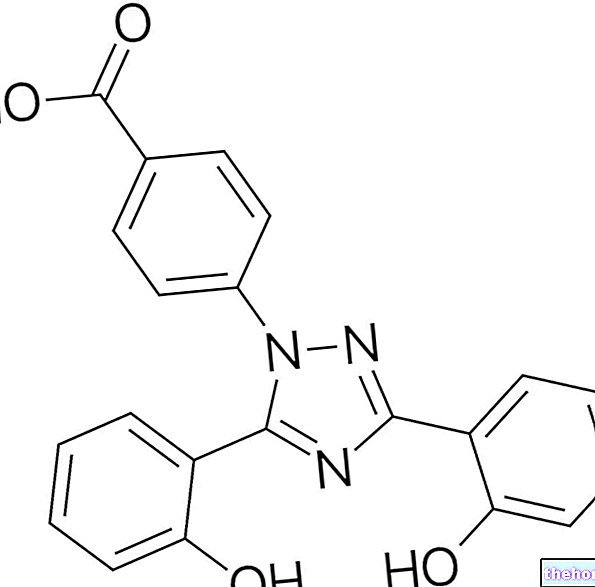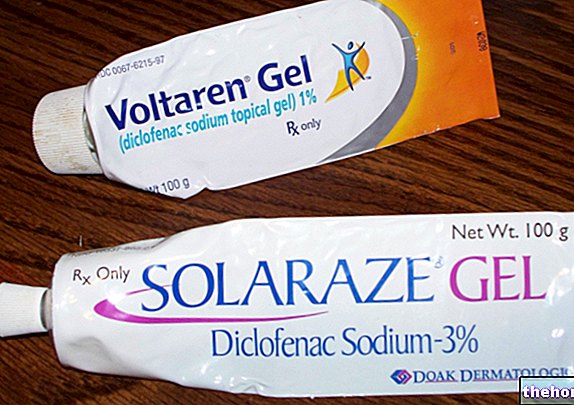Antifungals - or antifungals - are drugs used to treat infections caused by fungi, including yeasts and molds. These infections are called mycoses.
Introduction

However, this is not true for immunocompromised individuals. In fact, the spread of AIDS and the use of potent immunosuppressive drugs in the prevention of rejection in transplants and in anticancer chemotherapy have increased the incidence of life-threatening fungal infections. Therefore, the need has arisen to develop increasingly effective antifungal drugs and safe.
The difficulty in developing antifungal drugs lies in the high selectivity they must have. In fact, the differences between fungal cells and mammalian cells are very few, since both are eukaryotic cells.
However, even if minimal, there are some differences between these two types of cells:
- The presence of the cell wall in fungal cells, but not in mammalian cells;
- The composition of cell membranes. In particular, fungal cell membranes differ from mammalian ones due to the sterols present within them. Sterols are indispensable components of the cell membrane; ergosterol is present in fungal cells, while cholesterol is present in mammalian cells.
It is therefore clear why the cell wall and ergosterol are two of the main targets of antifungal therapy.
Classes of antifungal drugs
In summary, the targets for an antifungal therapy that is selective only for fungal cells are essentially two: the fungal cell wall and the ergosterol contained in the cell membrane.
Therefore, most antifungal drugs work by destroying or interfering with the synthesis of these two components that are essential for fungal cells.
The classes of antifungal drugs currently on the market will be briefly illustrated below.
Antifungals that alter the cell membrane
From the chemical point of view, these antifungal drugs are polyenes, that is, they are aliphatic hydrocarbons containing numerous carbon-carbon double bonds within their chemical structure.
These polyenes possess high affinity for sterol-containing cell membranes. More specifically, polyenes possess a great affinity for ergosterol-containing membranes (such as fungal ones).
These drugs are able to insert themselves inside the cell membrane and increase its permeability. This increase causes the cells to lose essential constituents (such as ions and small organic molecules) and - consequently - to die.
They belong to this class of drugs nystatin, L"amphotericin B and the natamycin.
Inhibitors of ergosterol biosynthesis
These drugs work by inhibiting one of the key enzymes in ergosterol synthesis, 14α-demethylase.
With the inhibition of this enzyme there is an accumulation of ergosterol precursors; this accumulation generates alterations in the permeability of the cell membrane and causes alterations in the functioning of the membrane proteins, thus condemning the fungal cell to certain death.
The drugs belonging to this class are numerous; among these we remember the ketoconazole, L"itraconazole, the terconazole, the fluconazole, the voriconazole and the posaconazole.
Squalene epoxidase inhibitors
Squalene epoxidase is an enzyme involved in the ergosterol synthesis process.
In particular, this enzyme converts squalene (a precursor of ergosterol) into squalene epoxide (another precursor of ergosterol) which - following other enzymatic reactions - is then transformed into ergosterol.
Inhibition of squalene epoxidase causes:
- A reduction in the total content of ergosterol inside the fungal cell membrane, this causes alterations in the permeability of the membrane itself and malfunctions of the membrane proteins involved in the transport of nutrients and in the regulation of cellular pH;
- An accumulation of squalene inside the fungal cell which - when it reaches too high quantities - becomes toxic to the cell itself.
All this leads to the death of the fungal cell.
They belong to this class of antifungals naftifina, the terbinafine, the tolnaftate and the "amorolfine.
Inhibitors of fungal cell wall biosynthesis
These antifungal agents inhibit one of the enzymes involved in the synthesis of the fungal cell wall, β-1,3-glucan synthetase. This enzyme is responsible for the synthesis of β-glucan, which is a fundamental element of the cell wall. A decrease in the amount of β-glucan inside the wall causes it to weaken and cause lysis of the fungal cell.
They belong to this class of drugs caspofungin, L"anidulafungin and the micafungin.
Antifungal drugs that act by other mechanisms
There are also antifungal drugs that do not interfere with the synthesis of the cell wall or membrane sterols, but which act with different mechanisms.
Among these drugs, we find:
- Flucytosine: it is a powerful antifungal which, however, does not have cytotoxic (toxic to the cell) activity per se. Flucytosine, in fact, is a prodrug that is internalized in fungal cells and here is metabolized to 5-fluorouracil (a cytotoxic agent) which - following further metabolism - is converted into 5-fluorodeoxyuridine, a metabolite capable of interfering with the protein synthesis. 5-fluorouracil is also used as such in anticancer chemotherapy.
- Griseofulvin: This drug is an antifungal antibiotic derived from a particular strain of the genus Penicillium. Griseofulvin is mostly used in the treatment of superficial mycoses. Once administered orally, griseofulvin is able to incorporate itself into keratin and prevent fungal growth. Furthermore, it appears that this drug can interfere with the synthesis of mycotic DNA.
- Ciclopirox: this drug is mainly used in the treatment of "superficial fungal infections. Cyclopirox has a very particular mechanism of action, that is, it is able to chelate (ie to bind through particular types of bonds defined" coordination "or" coordination " ) polyvalent cations - such as, for example, Fe3 + - thus causing the inhibition of metal-dependent enzymes found inside the fungal cell.
- Undecylenic acid: This antifungal is mainly used in infections caused by dermatophytes (the fungi responsible for infections of the skin, nails and hair). However, undecylenic acid is not capable of killing the fungal cell, but has a fungistatic action (ie it inhibits fungal proliferation) and exerts its action by interacting in a non-specific manner with the components of the cell membrane.




























